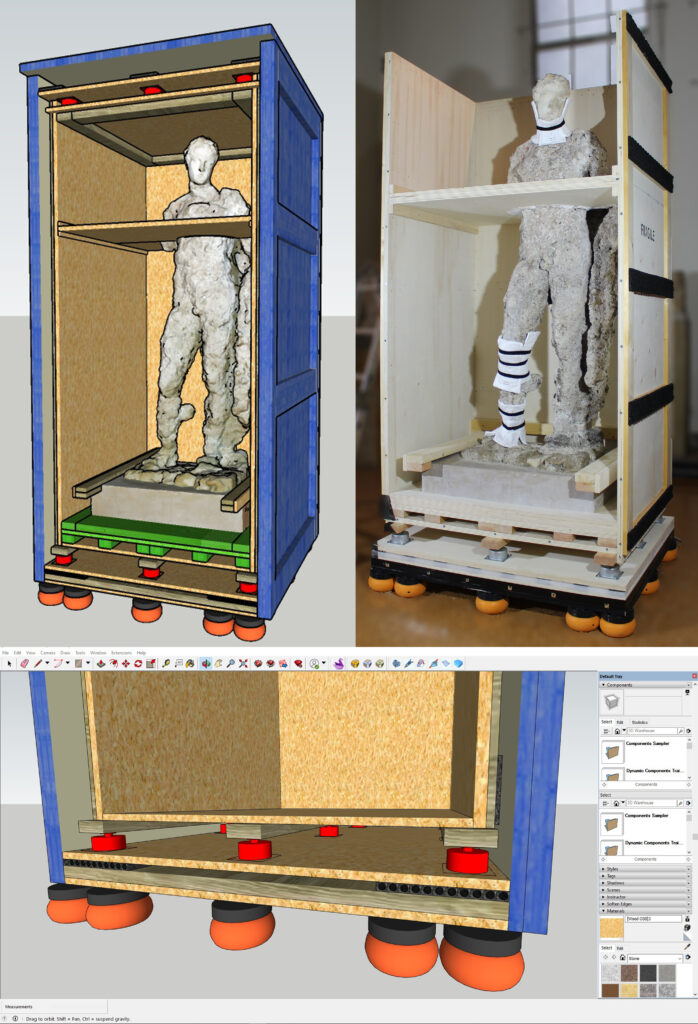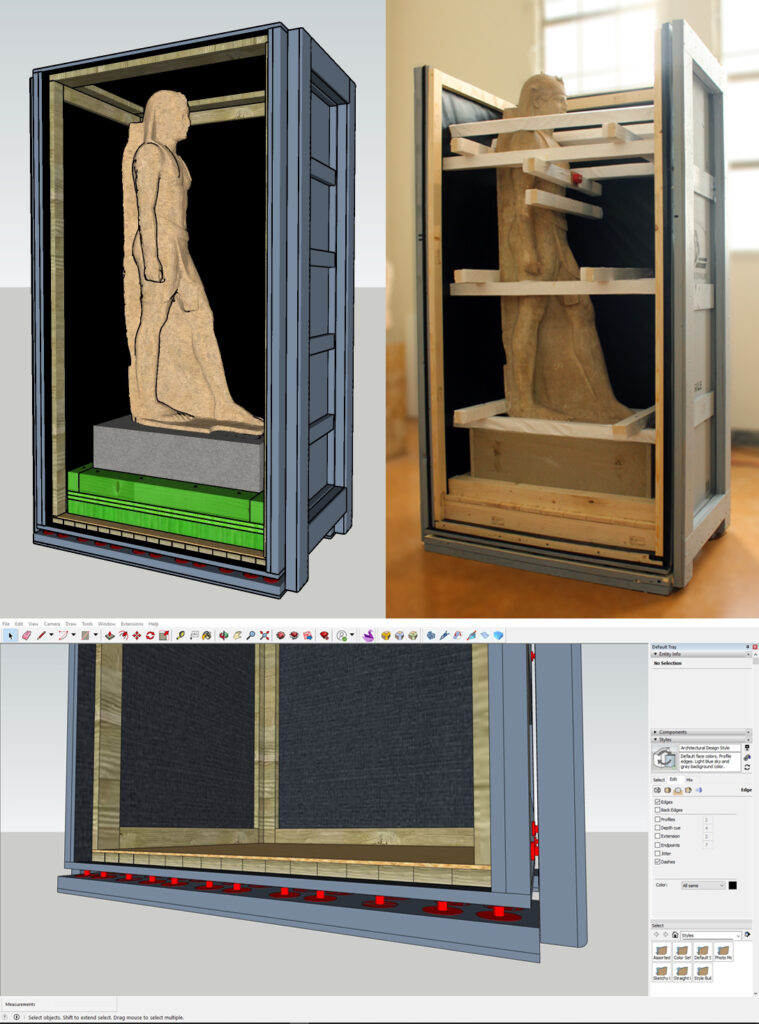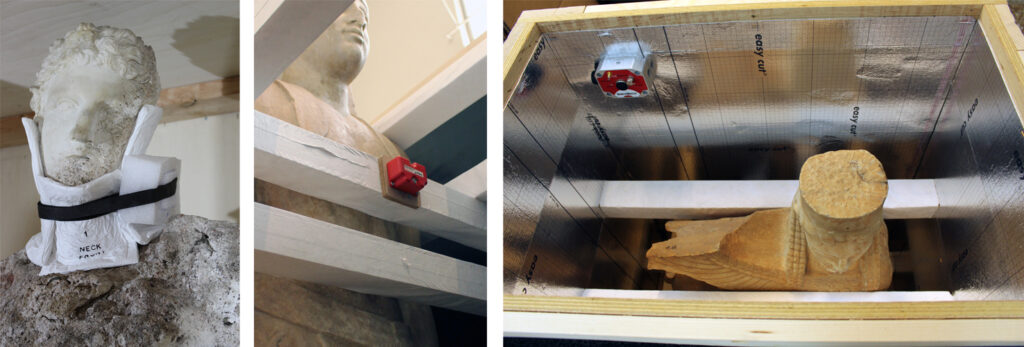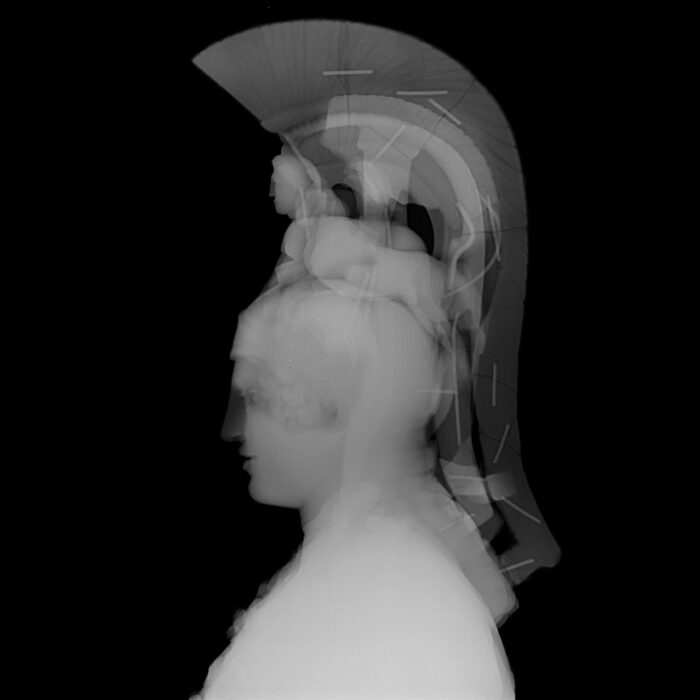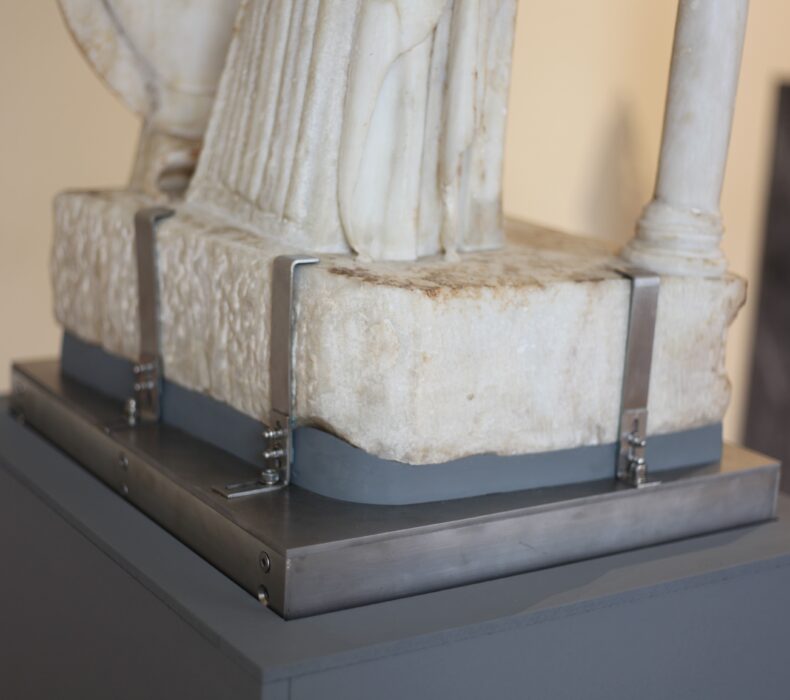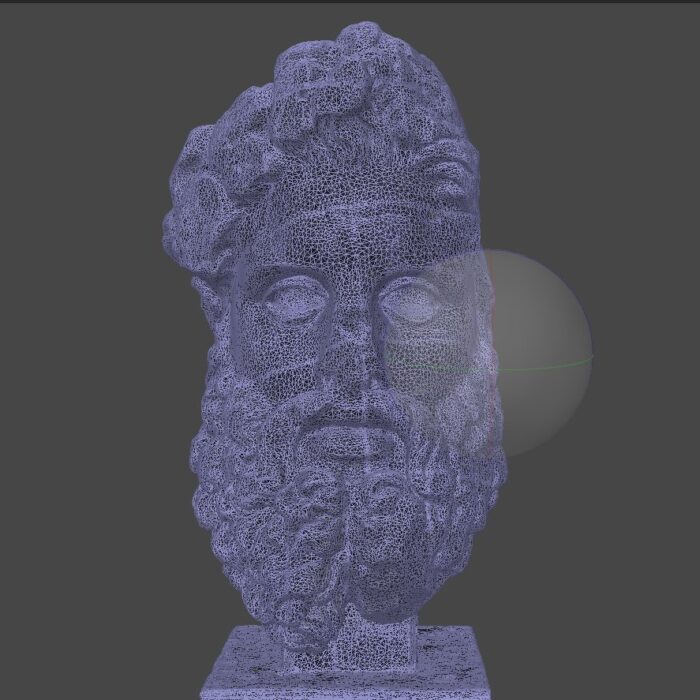Innovative design of artefacts’ transport crates
In the context of the cultural exchange between various institutions and bodies (domestically and abroad), the ΝΑΜ takes part with the short-term loan of artefacts from its collections.
The main concern of the laboratory is to maintain the condition of each artefact, qualifying as a loan, unchanged during its transport and is constantly working to improve the transport’s conditions. With this in mind the laboratory developed two types of cost effective, reinforced wooden transport crates. Their design includes, in addition to the box-in-a-box arrangement, the use of composite timber for the lids’ panels, the use of solid wood for their framing, as well as the application of solid wood cross rails to strengthen the lids. The most important contribution of the new design to the improvement of transport crates is the application of up to three different types of anti-vibration systems (rubber compound pads, triaxial loading bases, vulcanized rubber grain sheets) to reduce the shocks and vibrations of a wide range of frequencies that inevitably occur during any transport (road, sea, air) and can affect the state of preservation of the artefact in transit.
According to measurements of special monitoring equipment placed on artefacts, for the transport of which the above two types of wooden crates were used, the damaging/harmful vibrations and shocks received by the antiquities during the transport were minimized or even eliminated.
